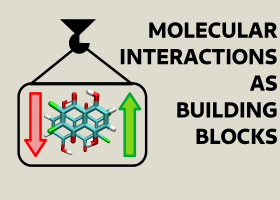Exploring Inter- and Intramolecular Interactions as Building Blocks of Larger Systems
A special issue of Symmetry (ISSN 2073-8994). This special issue belongs to the section "Chemistry: Symmetry/Asymmetry".
Deadline for manuscript submissions: closed (31 December 2021) | Viewed by 42185

Special Issue Editor
Interests: chemistry; computational chemistry; toxicology and pharmaceutics; chemical physics; biochemistry; materials science; molecular dynamics
Special Issues, Collections and Topics in MDPI journals
Special Issue Information
Dear Colleagues,
I would like to draw your attention to a new Special Issue devoted to exploration and understanding of inter- and intramolecular interactions. An elusive concept of “chemical intuition”, natural attraction to elegance and beauty—these and many other factors motivate us to look for symmetry and order in molecules and their assemblies. Many known factors affect the presence of symmetry in molecular systems, e.g., protonation, aromaticity, neighboring molecules, and a more distant environment. Here are some examples of not-so-obvious manifestations of the role of internal molecular reorganization and intermolecular interactions responsible for self-organization of molecules to large systems. Let us look for a moment at “proton sponge” types of compounds. In their protonated forms, they could be of high symmetry in the case of a single-well bridge proton potential function. What happens when such symmetry is broken? What if the energy barrier is low enough so that the proton jumps very fast between the minima and the effective potential can be symmetric at the experimental time scale? Another case: What is the role of the solvation shell on the symmetry of the solvated molecule? Vice versa, how strong can the solvation shell ordering effect of a strongly polar molecule in solution be? Additionally, what happens to a molecule of high symmetry in a lower-symmetry crystal environment? A lot of the effort of physical and computational chemistry is devoted to such questions concerning very diverse classes of compounds. Therefore, this Special Issue will cover recent examples of the interplay between intramolecular bonds, intermolecular interactions, symmetry, and order of small and extended molecular systems.
Dr. Aneta Jezierska
Guest Editor
Manuscript Submission Information
Manuscripts should be submitted online at www.mdpi.com by registering and logging in to this website. Once you are registered, click here to go to the submission form. Manuscripts can be submitted until the deadline. All submissions that pass pre-check are peer-reviewed. Accepted papers will be published continuously in the journal (as soon as accepted) and will be listed together on the special issue website. Research articles, review articles as well as short communications are invited. For planned papers, a title and short abstract (about 100 words) can be sent to the Editorial Office for announcement on this website.
Submitted manuscripts should not have been published previously, nor be under consideration for publication elsewhere (except conference proceedings papers). All manuscripts are thoroughly refereed through a single-blind peer-review process. A guide for authors and other relevant information for submission of manuscripts is available on the Instructions for Authors page. Symmetry is an international peer-reviewed open access monthly journal published by MDPI.
Please visit the Instructions for Authors page before submitting a manuscript. The Article Processing Charge (APC) for publication in this open access journal is 2400 CHF (Swiss Francs). Submitted papers should be well formatted and use good English. Authors may use MDPI's English editing service prior to publication or during author revisions.
Keywords
- intra- and intermolecular interaction
- IR
- NMR
- X-ray diffraction
- computational chemistry/physics
- bonding and non-bonding interactions
- nanomaterials
- drug design
Benefits of Publishing in a Special Issue
- Ease of navigation: Grouping papers by topic helps scholars navigate broad scope journals more efficiently.
- Greater discoverability: Special Issues support the reach and impact of scientific research. Articles in Special Issues are more discoverable and cited more frequently.
- Expansion of research network: Special Issues facilitate connections among authors, fostering scientific collaborations.
- External promotion: Articles in Special Issues are often promoted through the journal's social media, increasing their visibility.
- Reprint: MDPI Books provides the opportunity to republish successful Special Issues in book format, both online and in print.
Further information on MDPI's Special Issue policies can be found here.





